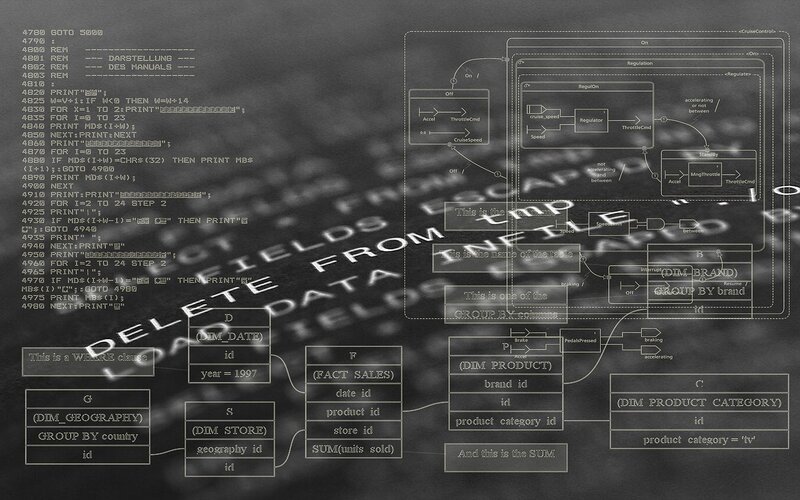
The Power of Software Translation: Making Apps Truly Global
The Future of Software Translation
In today's digital era, geographical boundaries are no longer a barrier to the expansion of technology products, including software. In an increasingly connected world, application developers are racing to reach global users. However, bringing applications to the international market requires more than just translating the user interface into various languages. The right software translation strategy is needed to truly make an application global.
What Is Software Translation?
Software translation is the process of translating content in a software application, including text in the user interface, error messages, documentation, and other elements that interact with the user. This is part of a broader process, namely software localization, which includes not only language translation but also cultural adaptation, date and time formats, currencies, and relevant local references. The goal of software translation is to create a user experience that feels natural, as if the application was designed specifically for users in a particular country or region. Without this process, applications can feel foreign, difficult to use, and can even lead to cultural misunderstandings.
Read More: Future Trends in Malaysian Web Novel Localization
Why Is Software Translation Important?
Imagine a successful financial application in the United States launched in the Japanese market without translating technical terms or changing the format of numbers and currencies. Japanese users would be confused, and perhaps even view the application as unprofessional or untrustworthy. This could lead to a decrease in users, bad reviews, and ultimately failure to expand globally. This is why software translation is a key element of a product’s globalization strategy. Good software translation will:
- Increase international user adoption.
- Improve the user experience.
- Build a strong brand reputation in new markets.
- Increase global revenue potential.
Benefits of Applications to Improve the Effectiveness of Cross-Language Communication
1. Overcoming Language Barriers
Translator applications are not only able to translate text but also translate documents, websites, images, and voices in real-time, allowing users to communicate smoothly with foreigners. This is very useful in various situations, such as when traveling to a foreign country, attending an international conference, or establishing business cooperation with partners from abroad.
2. Increase Understanding and Trust
By using a translator application, users can ensure that their messages are conveyed correctly and understood correctly by the other person. This helps avoid misunderstandings and builds trust in communication.
3. Expanding Opportunities and Networking
The ability to communicate across languages opens up new opportunities for collaboration and business connections with people from all over the world. Translation apps make this process easier by allowing users to connect with people they would otherwise be unable to reach due to language barriers.
Challenges in Software Translation
While important, software translation is not a simple process. There are several challenges that developers and translation teams need to overcome:
1. Space Limitations in the Interface
Some languages, such as German or Russian, can have much longer words than English. If the UI (user interface) design is not flexible, translated text can cut off visual elements, creating a cluttered appearance.
2. Dynamic Content
Applications often contain text that comes from databases or user input, so not all content can be translated statically. This requires the integration of sophisticated translation systems, such as context-based translation.
3. Cultural Context
Some words or phrases may have very different meanings in other cultures. For example, a hand symbol or a certain color may have negative connotations in one country. Therefore, software translators must have cross-cultural understanding.
4. Maintenance and Updates
When software is updated, new content must be translated quickly to keep all language versions in sync. This requires good language version management and tools such as a Translation Management System (TMS).
Effective Strategies for Software Translation
To overcome these challenges, software developers and companies need to adopt a professional approach to software translation. Here are some strategies that have proven to be effective:
1. Use an Internationalization System (i18n)
Before the translation process begins, the software must be internationalized—that is, designed to support multiple languages and formats. For example, text should not be embedded directly in the source code but should be separated in translation files (.po, .json, or .xliff).
2. Use Professional Translators and Native Speakers
While there are many automated translation tools, the best quality translations still come from human translators who understand the local context and culture. Ideally, they should be native speakers of the target language.
3. Integrate a Translation Management System (TMS)
A TMS makes it easy to manage the translation process, including tracking new strings, managing glossaries, and collaborating between the development and translation teams. It also supports translation memories that speed up the process and maintain consistency.
4. Conduct Localization Testing
Once the translation is complete, the app should be tested to ensure that all text displays correctly, there are no formatting errors, and that UI elements continue to function as intended in all languages.
Case Study: Global Success with Software Translation
Many large companies have proven that software translation can be a major driver of their global growth. Take WhatsApp and TikTok, which are now available in over 60 languages. They not only translated the user interface but also tailored the app experience to suit the user’s cultural preferences. Even startups like Duolingo—a language learning app—are realizing the importance of localization. By translating and customizing content for users from different countries, they’ve managed to reach hundreds of millions of users worldwide.
The Future of Software Translation

In the future, software translation will increasingly be integrated with AI and machine learning technologies. With these advancements, systems can translate in real-time based on user context and habits. However, the role of humans in ensuring quality and cultural relevance remains irreplaceable.
In addition, software translation integration with CI/CD (Continuous Integration/Continuous Deployment) will become common practice. This means that every software update will automatically trigger the translation process, ensuring that all language versions stay in sync. In an increasingly global digital world, the power of software translation cannot be underestimated. Effective software translation is not just about replacing words but creating experiences that are relevant and integrated with local cultures. It is a critical bridge between technology and the global community.
With the right strategy, companies can ensure that their applications are truly global—not only accessible internationally but also understandable and comfortable for anyone, anywhere. Want your app to successfully penetrate the international market? Digital-Trans Asia is ready to help with accurate, fast, and culture-oriented software translation services. Contact our team today and make your app truly global.
Ready to globalize your software with expert translation services? Visit https://digital-trans.asia/ to learn more about our offerings. Contact us today to get started!